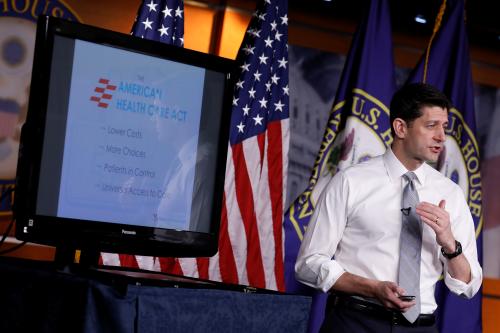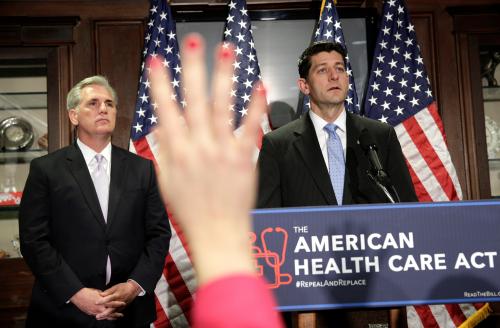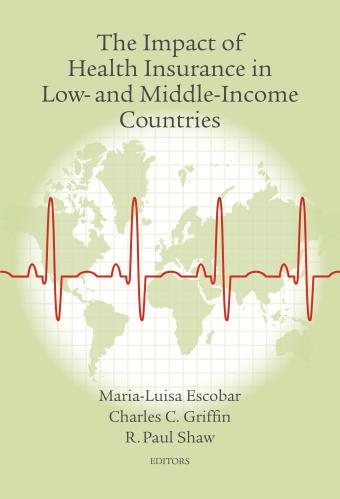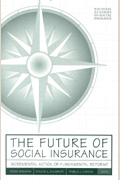This article was originally posted on Fortune on March 15, 2017.
Medieval chemists thought they could turn ordinary metals into gold. During the presidential campaign, Donald Trump claimed he could broaden health insurance, lower people’s out-of-pocket costs, and reduce federal spending, all at the same time. Scientific advancements showed the futility of alchemy. And the nonpartisan Congressional Budget Office (CBO) has now shown that Trump’s health care hopes are also fantasy.
The CBO reported that the Congressional Republican health reform bill, the American Health Care Act (AHCA), would achieve just one of Trump’s goals: It would lower federal spending by $1.2 trillion over 10 years. No surprise there—the bill would cut benefits and remove incentives that encourage people to get health insurance, and covering fewer people saves money. An estimated 4 million fewer people would have health insurance this year, rising to 14 million next year, and 24 million by 2024, according to the CBO.
Insurance premiums for individuals who buy insurance on their own would jump an estimated 20% this year. They are projected to fall later, but only because the plans insurers will offer will cover fewer medical expenses and because older people, who cost more to insure than younger people do, will flee the individual market.
According to the CBO, coverage losses will be concentrated among those with low and moderate incomes. Access to Medicaid, the health program for the poor and disabled, would be narrowed, and proposed changes in the way the federal government supports Medicaid would encourage states to narrow benefits. Tax credits and cost-sharing subsidies that now vary based on each family’s income and local costs of health care would be phased out. They would be replaced with mostly smaller tax credits that vary only with age—not with people’s incomes or places of residence. The result would be that many of those with low incomes, people in their 50s and early 60s, and those residing in areas with high medical costs would find insurance unaffordable.
Scientific advancements showed the futility of alchemy. And the nonpartisan Congressional Budget Office has now shown that Trump’s health care hopes are also fantasy.
But there will be winners under the Republican plan: people with higher incomes. Obamacare limits aid to couples with incomes below $64,080 in 2017. The Republican plan would cut tax benefits for many of those households, but extend tax credits to those with higher incomes—for example, to couples with incomes as high as $230,000 in 2020.
But, as the hucksters say on late-night television, “Wait, there’s more!”—tax cuts for the truly well-to-do. The Republican bill would eliminate two taxes the Affordable Care Act imposed on the well-to-do to help those with modest incomes afford coverage: a 0.9% earnings tax on couples with combined earnings above $250,000 (individuals above $200,000) and a 3.8% tax on investment earnings for couples with incomes above the same thresholds. It is difficult to understand why, in the end, Republicans would endorse such a program—one that lends support to the allegation that their party is servant to the rich.
The most striking aspect of the CBO findings, however, is how unsurprising they are. When people are made legally ineligible for a program such as Medicaid, enrollment must decrease. When reductions in tax credits and other subsidies raise out-of-pocket costs for health insurance, fewer people will buy coverage, particularly if they can go without it, safe in the knowledge that they can buy coverage whenever they get sick. That is why a range of independent analysts predicted that the CBO analysis would show millions of people losing coverage.
The CBO freely acknowledges, and actually emphasizes, that estimates of the effects of complex legislation, such as Obamacare and the AHCA, are inexact. CBO estimated that between 2012 and 2016, Obamacare would reduce the number of people without health insurance by 23 million; the actual decline was 20 million. It acknowledges that its estimate of how many people would buy coverage through the newly created marketplaces was much further off the mark. The point is that the effects of the AHCA could be less draconian than CBO’s estimates indicate, but they could also be even worse. That the AHCA could actually expand coverage, as Tom Price, secretary of Health and Human Services claims, is simply not credible.
Members of the Republican Party have spent six years swearing that they would “repeal and replace” Obamacare. Trump promised that the replacement plan would broaden coverage, lower out-of-pocket costs, and save the government money. Will Republicans at last discover that, like the alchemists who preceded them, what they seek is impossible?









Commentary
Op-edTrumpcare is pure fantasy and here’s how the CBO backs that up
March 15, 2017